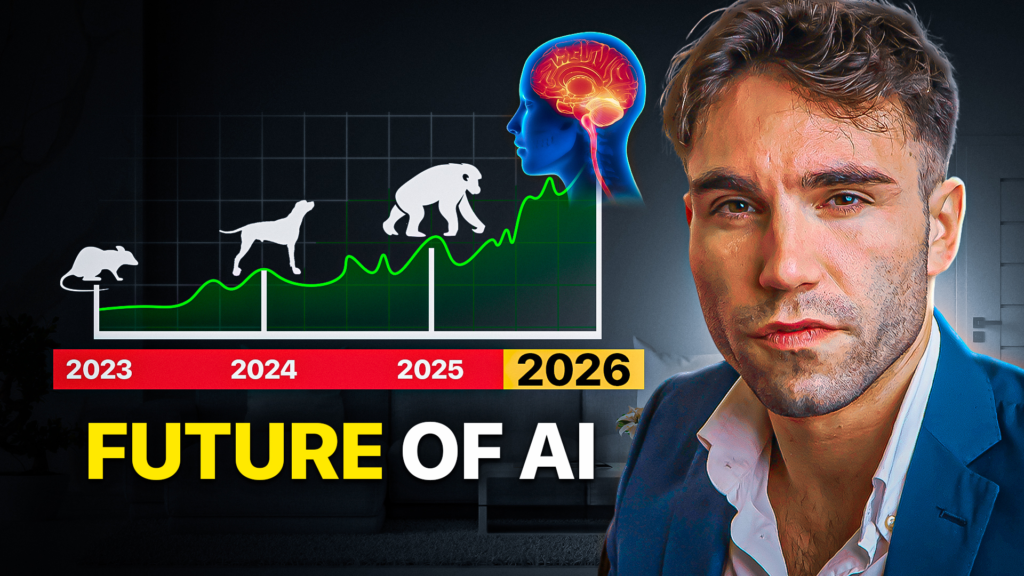“Cash flow is king”
A maxim that reigns true in the business world.
Cash flow, representing the real-time movement of cash in and out of a business, is crucial for meeting day-to-day obligations and is a direct indicator of a company’s financial health, and its ability to paying out, eventually, the profits.
The Imperative of Cash Flow Forecasting
- Large Organizations: Already engaged in sophisticated cash flow forecasting, these entities must continually refine their methods to adapt to market dynamics and maintain operational efficiency.
- Small and Medium Enterprises (SMEs): Often limited by resources, many SMEs either overlook comprehensive cash flow forecasting or approach it narrowly. This can lead to financial vulnerabilities and missed opportunities for growth.
The advent of Generative AI in cash flow forecasting is set to revolutionize financial management for businesses of all sizes. This innovative technology levels the playing field, offering distinct advantages for both large corporations and smaller enterprises.
Elevating The Game For Large Corporations
For big organizations that are already adept at cash flow forecasting, Generative AI presents an opportunity to advance their game. It offers:
- Enhanced Accuracy and Depth: By analyzing complex patterns and trends, Generative AI provides more nuanced insights into financial forecasting.
- Dynamic Scenario Planning: It enables these corporations to simulate and prepare for various financial scenarios, making their forecasting more adaptable and robust.
A New Paradigm for Smaller Enterprises
For smaller businesses, Generative AI could well become a game-changer, essentially acting as an outsourced, fully automated financial analyst. It offers:
- Complete Automation: it can autonomously perform comprehensive cash-flow analysis, reducing the need for extensive in-house financial expertise.
- Accessibility to Advanced Forecasting: Even businesses with limited resources can access sophisticated cash flow forecasting, leveling the playing field with larger competitors.
- Tailored Simulations and Reports: it can factor in both alternative data and company-specific information, providing customized insights and detailed reports.
Disclosure
Since i’m familiar with what we are developing at icarex.ai, i’ll base my analysis on Genfin, the “Generative AI” model for financial applications we developed.
The introduction of an AI system like “Genfin,” modeled on the AutoGPT concept, represents a significant advancement in the realm of cash flow forecasting.
Genfin, as an autonomous, goal-oriented generative AI, brings a new dimension of intelligence and adaptability to financial analytics.
Let’s explore how Generative-AI-based Agents could revolutionize cash flow forecasting for businesses.
A short premise, what is a GenAI-based agent?
Generative AI-powered agents can be described as a system that can use its intelligence to reason through a problem, create a plan to solve the problem, execute the plan and re-evaluate the plan if issues are during execution.
In short, agents are a system with complex reasoning capabilities, memory, and the means to execute tasks.
Generative-AI-based Agents can autonomously set goals, plan actions, and adapt strategies based on the evolving financial and business landscape.
The significance of Generative AI in Cash-Flow Forecasting
3 traits that make GenerativeAI-based Agents an absolute game-changer for cash-flow forecasting:
1 Dynamic & Adaptive Planning
AI agents, unlike traditional models, are not limited to narrow, predefined tasks. They can dynamically create and adapt their planning based on the evolving business environment and data. This means they can simulate n-steps of a scenario and apply planning to unfold n more steps.
Thanks to this ability, agents can break down complex problems, like cash flow forecasting, into smaller, manageable subsets. This decomposition allows for a more thorough analysis of each component, leading to more accurate overall forecasts.
In cash flow forecasting, businesses face questions like, “What will be the impact of a sudden market downturn, or how will a new product launch affect our liquidity?” The planning ability decomposes these broad questions into smaller, more specific inquiries, making the problem more tractable.
2 Qualitative Insights
A key, often understated in the context of algorithms, but so true for Generative AI-based agents is their ability to deliver qualitative insights.
This goes beyond traditional AI associations with numerical analysis and computations. GenAI agents excel in not only presenting data-driven forecasts but also in explaining the underlying rationale of these projections.
This translates to understanding the ‘Why’: GenAI agents help business leaders grasp not just the potential outcomes of their financial decisions but also the reasons behind these outcomes. This is crucial for a deeper understanding of cash flow dynamics.
3 Contextual and Comprehensive Analysis
Generative AI agents can integrate and analyze a wide range of data, structured or unstructured, from market trends to internal financial metrics, to internal emails, notes, presentations, online data as well as offline data, product roadmaps, representing a more precise context the business find itself in, while aslo providing a more holistic view of the business’s financial health
This level of sophistication allows these agents to not only simulate financial scenarios, while integrating an incredibly rich internal and external, online and offiline context, but also to provide detailed, explanatory narratives that outline the underlying business principles and their implications — AP

Comprehensive Scenario Simulation
Generative AI can simulate a wide range of cash flow scenarios, considering variables that might be overlooked in manual processes. It can factor in market volatility, changes in consumer behavior, supply chain disruptions, and more, providing a comprehensive view of potential financial futures. Instead of a one-size-fits-all model, AI agents can tailor forecasts to the specific needs and nuances of the business, accounting for unique factors that influence cash flow
Self-Driven Analysis
Unlike traditional AI models that require explicit programming for specific tasks, GenFin-like systems could autonomously identifies and pursues goals related to cash flow forecasting. This means it can independently recognize the need to analyze certain financial trends or anomalies without human intervention.
Business Principle Application
Generative AI-based Agents can apply complex business principles and behaviors in the making of each scenario. This involves more than numerical analysis; it includes understanding market dynamics, customer behavior patterns, and operational impacts.
Narrative-Based Forecasting
In each scenario, GenFin-like applications could generate a narrative that describes how different factors might influence business outcomes. For example, it can simulate how a change in supplier terms might affect cash flow and explain the cascade of effects this would have on different aspects of the business.
GenFin’s reports could detail the chain of causes and effects within each scenario. This approach helps businesses understand not just what might happen, but why it might happen, providing deeper insights into the mechanics of their cash flow.
Simulating ‘What-If’ Scenarios
Leveraging the decomposition ability, the module can simulate multiple ‘what-if’ scenarios. For instance, it can model how changes in interest rates, consumer demand, or supply chain disruptions might impact cash flow.
Visualization of Principles and Numbers
These reports may include visualizations and statistical analyses that link qualitative principles to quantitative outcomes. Such visualizations make it easier for decision-makers to grasp complex financial dynamics and their potential impact on the company’s finances.
The Disruptive Potential
So which are the benefits that this technology brings to the table?
- Enhanced Accuracy and Depth: By breaking down complex problems, GenAI-based Agents can provide more accurate and detailed forecasts, delving deeper into the potential consequences of financial decisions.
- Increased Efficiency: Automating the process of scenario analysis and cash flow forecasting saves significant time and resources, allowing financial teams to focus on strategic decision-making rather than data processing. Most importantly, for smaller companies this makes the difference FROM NOT having cash-flow forecasting in place, TO having it at the highest possible level.
- Proactive Financial Management: The ability to simulate and plan for a range of scenarios equips businesses to be more proactive in their financial management, potentially avoiding pitfalls before they occur.
- Strategic Decision Support: With more nuanced and comprehensive data analysis, businesses can make more informed strategic decisions, leading to better financial outcomes.
- Brainstorming Tool: GenFin-like systems can serve as a brainstorming partner, helping businesses explore various strategic options. By simulating different scenarios and providing feedback on their potential outcomes, it aids in the ideation process.
Challenges and Considerations
While this approach offers numerous benefits, there are challenges to consider:
- Complexity and Usability: Ensuring that the Genfin-like systems are user-friendly and accessible to financial professionals without deep technical knowledge.
- Data Security and Privacy: Safeguarding sensitive financial data processed by the system. In the case of Genfin or Custom GenAI solutions in general this point is already solved because of the full-control Custom GenAI applications provide to users.
- Integration with Existing Infrastructure: Seamlessly integrating the system with existing financial systems and processes.
Everything else stays the same
Of course, apart from the new features, you still get the same features from traditional AI systems as well:
Adaptive Forecasts
As new data comes in, the AI agent can instantly adjust its forecasts, providing real-time insights that are crucial for quick decision-making.
Adaptive Learning
Such AI applications could still constantly learn from incoming data, market trends, and its own forecasting successes and mistakes. This continuous learning allows it to adapt its forecasting models to be more accurate over time.



